You are here
If you are searching for a stunning southern Utah canyon backpacking adventure off of the national park circuit, Coyote Gulch might be just what the doctor ordered. Highly regarded by locals, this diverse canyon gem is less well known nationally, which means you might be able to catch it without the crowds. The varied scenery of this backpack trip spans dry wash beds, flowing streams, waterfalls, towering canyon walls, cottonwood groves, sand dunes, arches, and a natural bridge.
There are multiple access points to the canyon, but most would consider the span to be from Red Well or Hurricane Wash trailheads in the west to the Forty Mile Ridge Trailhead in the east. Routes can travel up or downstream, and intermediate access is possible from the Forty Mile Ridge Water Tank Trailhead (also known as Jacob Hamlin Trailhead), providing lots of built-in potential routes. This particular adventure began at Red Well in the west and terminated at the Forty Mile Ridge Water tank via a 2-mile east-west road hike from the Forty Mile Ridge Trail (using a shuttle car). The last 2 miles of road may need to be hiked due to deep sand on the stretch of road between the water tank and Forty Mile Ridge Trailhead that can make the road potentially impassable.
Most of the duration of this trail is through sand or creek bed, resulting in slow travel times. Setting out from the Red Well Trailhead, the early portion of the trip is dry and exposed (this is also true of Hurricane Wash). At most times of the year, water will appear in the sandy creekbed a few miles into the hike. The confluence of Coyote Gulch is reached after 7 miles from the Red Well Trailhead (only 5.5 miles from Hurricane Wash). This junction, 7.5 miles west of the confluence with the Escalante River, is where the real scenery begins and also where the best camping is to be found.
Approximately 1.5 miles from this confluence is Jacob Hamlin Arch (also known as Lobo Arch), one of the most photographed features of the canyon. Roughly 150 feet wide and 100 feet tall, it is not a massive arch by any means, but the scale within the canyon makes it marvelous. The sandy riverbed sections here are frequently occupied with campers. This junction also provides the shortest entrance/exit point to the canyon via the Jacob Hamlin Arch Trailhead (Forty Mile Ridge Watertank), but it does require the navigation of a steep slickrock scramble.
From Jacob Hamlin Arch it is roughly 1.7 miles downstream to Coyote Natural Bridge, a 50-foot span of sandstone that has been carved by the stream flowing beneath it. Roughly 0.7 miles past the natural bridge the remnants of Fremont Native Americans can be seen, including an old dwelling and pictographs. Very near this location, a side trip via a primitive trail and small canyon branches north to access the Black Lagoon. Many adventurers find this to be a welcome swimming hole and cliff jumping locale.
Continuing downstream in Coyote Gulch, the next major landmark is Cliff Arch, a jug handle arch high on the north wall. This area can present some challenges for passage. Follow the high bench on the north side of the wash for an elevated viewpoint of a large cottonwood grove and several waterfalls below. Passage is also supposed to be possible on the south side of the canyon. From the bench, a small scramble will quickly return to the water edge. This area below Cliff Arch provides many campsite opportunities.
Roughly 0.4 miles from the confluence of the Escalante River is the most difficult obstacle in the hike. Here, an impenetrable boulder jam clogs the lower canyon. Bypassing the boulder jam involves traversing a steep slickrock ledge on the south side. It is recommended to stay low near the edge while crossing. The ledge will end at a point roughly 5.5 feet off the ground where logs have been placed to assist travelers. The sand dune climb out of Coyote Gulch to Crack in the Wall begins just before this ledge. If you don't want to reach the Escalante River, it is not necessary to traverse the ledge. At the confluence of the Escalante River, those wishing to view Stevens Arch from the canyon floor can wade across the river and travel upstream approximately 0.25 miles where the 220-foot-wide, 160-foot-tall natural arch high in the canyon wall will come into full view.
As mentioned above, the sand dune climb out of Coyote Gulch to Crack-in-the-Wall and Forty Mile Ridge departs very near the boulder jam. This portion of the trail ascends 700 feet of sand dune in roughly 1 mile to reach Crack-in-the-Wall. The climb is demanding, and many adventurers choose this as their entrance route, but the views along the way are stunning. As its name implies, Crack-in-the-Wall is an 18-inch-wide section where two large rock slabs in the cliff face have separated. For most, it will require sideways passage with gear held overhead. Some opt for rope here to haul packs. Those wishing to do so should take care to protect the rock from scarring. From Crack-in-the-Wall, a 2-mile hike across slick rock and sand is required to reach the Forty Mile Ridge Trailhead.

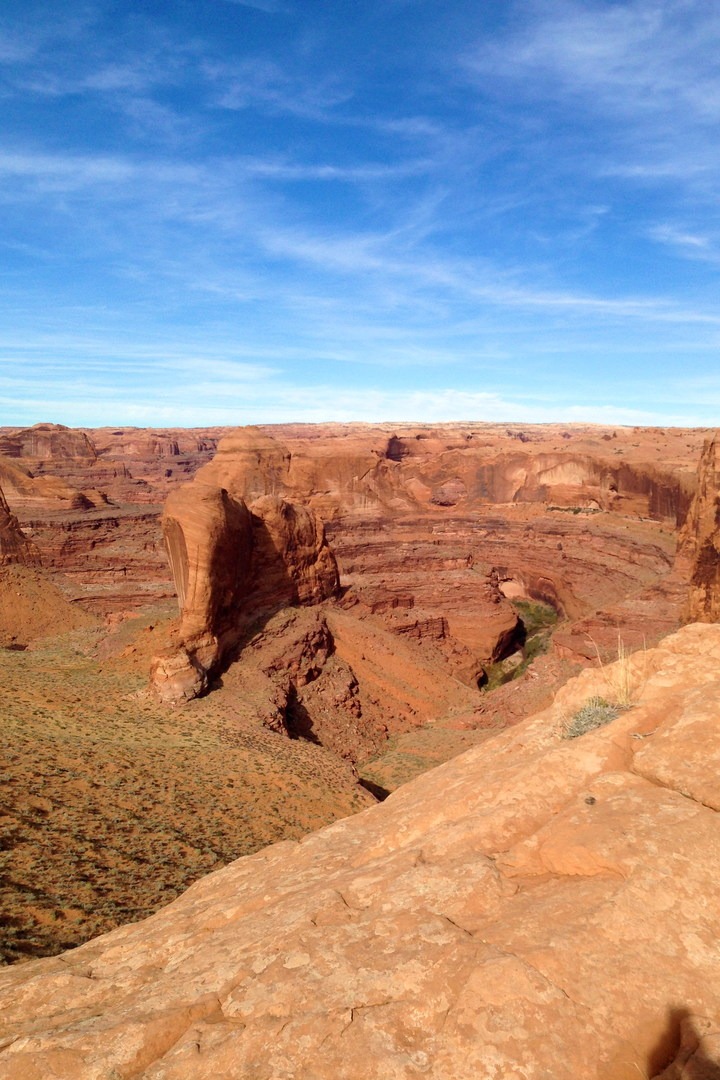
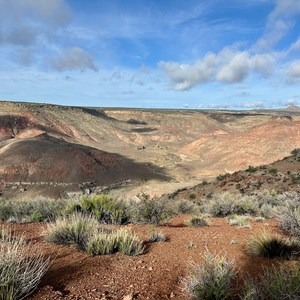
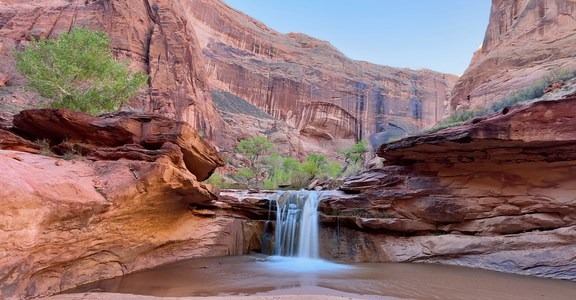
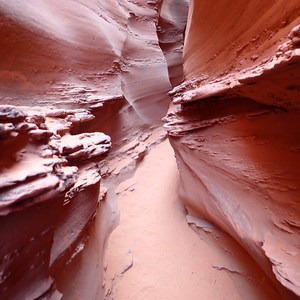
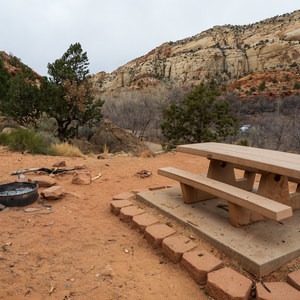



Comments
Sign In and share them.